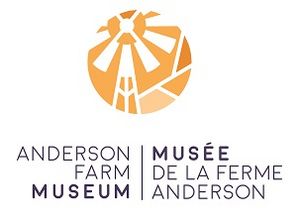Anderson Farm Museum facts for kids
 |
|
| Lua error in Module:Location_map at line 420: attempt to index field 'wikibase' (a nil value). | |
| Location | 550 Regional Road 24, Lively, Greater Sudbury, Ontario, Canada |
|---|---|
| Type | Heritage centre |
| Public transit access | Cross & Phillip stop, Greater Sudbury Transit 701 Lively |
The Anderson Farm Museum is a cool place in Lively, Greater Sudbury, Ontario, Canada. It's a museum that teaches you about local history. It's also a heritage center and a spot for fun events! The museum is built on what used to be the Anderson family farm. This farm is about 14 acres big, mostly outdoors, and still has the original farm buildings. You can see old tools and items from the area's past. There's even an old building from a community called Creighton that was moved here.
Contents
Exploring the Farm's Past
The museum mainly tells the story of the Anderson family. They were a typical Finnish pioneer family who settled in this area. The museum focuses on when the Andersons arrived and built their farm in the 1910s. It also shows how the farm grew and became one of the biggest dairy farms around.
The Anderson Family's Story
Frans Viktor Anderson and Gretta Peltonen came to Canada from Finland in the early 1900s. They got married in Copper Cliff in 1901. Many Finnish people moved to Canada around this time. They were looking for better opportunities and to escape problems in their home country.
Finns often chose to settle in places like Northern Ontario, Manitoba, Michigan, and Minnesota. These areas looked a lot like Finland. Also, jobs like farming, logging, and mining were common in Finland and were in high demand in North America.
Sudbury's Growth and New Communities
Around this time, Sudbury was becoming an important industrial city. New railways, like the Canadian Pacific Railway (CPR) and Algoma Eastern Railway (AER), made travel and trade much easier. This made the area a great place for new settlers.
Small towns, often built by companies, started popping up along these railway lines. One such town was Creighton, built in 1900. These new towns had many workers and their families. This created a strong market for farmers to sell their food. The railways also made it easy to send farm products to bigger cities like Sudbury. Many Finnish families started farms in the rich land west of Sudbury. They formed communities like Beaver Lake.
Building the Anderson Farm
Frans Anderson, who started going by "Frank," first worked at the Creighton mine. His family's life got better over time. They had several children and moved to the Crean Hill mining community in 1906. There, Frank was a shift boss, and Gretta ran a boarding house.
In 1910, they moved to Creighton and began saving money to build their own farm. By 1914, they had built their farmhouse. This house is now the main part of the museum. At that time, they lived in Waters Township, as the town of Lively didn't exist yet.
In 1916, the main barn for their dairy cows was built. By the early 1920s, the farm was much bigger. The family's success was clear when they added a new kitchen to their house in the mid-1920s. By the end of the 1930s, the farm's main operations had mostly stopped. Frank Anderson passed away in 1944.
Preserving the Farm's Heritage
People started working to save the farm in the second half of the 1900s. By 1985, the site was known as the Anderson Farm Heritage Project. Around this time, the farm's famous Beatty Brothers Limited Beatty Pumper Windmill was put together. It was made from parts of the farm's original three windmills, which helped power the dairy operations. This windmill is even in the museum's logo!
The Creighton Mine Cabin
In 1986, a company called Inco announced that the town of Creighton would close. Residents had to move out by 1988. Many homes from Creighton were moved to other towns in Greater Sudbury.
Around this time, a historic log cabin, which used to be the "paymaster's cabin" in Creighton, was moved to the Anderson Farm. This cabin acted like a company bank in Creighton's early days. It's still at the museum today. The museum uses it to teach about Creighton and mining history, along with the farming history of Waters Township.
Community Involvement
In 1995, the Walden Art Club held a special art show at the Anderson Farm. Many local artists created paintings and drawings inspired by the farm itself.
In 2006, the Walden Community Action Network's Heritage Committee was formed. They suggested many ideas to the Greater Sudbury city council to improve and protect the farm. Because of their efforts, the Anderson Farm Museum Heritage Society (AFMHS) was officially created in 2007.
What's Happening at the Museum Today
The Anderson Farm Museum is managed by Greater Sudbury Heritage Museums. This group works to protect history and is part of the City of Greater Sudbury. The museum is open to the public during visiting hours.
The Anderson Farm Museum Heritage Society also organizes events at the farm. They host three regular events each year:
- The Rock the Farm Free Concert/Farmers' Market in July and August.
- A Fall Fair in September.
- A Christmas tree lighting in December.

